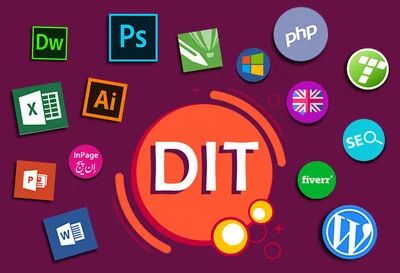Step into the world of technology and innovation with our DIT Course! This comprehensive program covers IT fundamentals, software applications, networking, programming, database management, and cybersecurity, ensuring you gain a well-rounded skill set.
Ideal for beginners and aspiring IT professionals, this course provides hands-on training to help you excel in the digital era and open doors to various career opportunities in the tech industry.

Diploma in Information Technology (DIT) is a dynamic field encompassing a broad range of digital skills and knowledge essential for navigating the modern technological landscape. This section will delve into the definition and scope of DIT, providing readers with a foundational understanding of the subject.
Tracing the historical evolution of digital technologies is crucial to appreciating the rapid advancements that have shaped the world we live in today. From the invention of the first computer to the proliferation of smartphones, we will explore the key milestones that have defined the digital era.
In an age dominated by digital interactions, understanding the importance of DIT is paramount. This section will show how DIT skills are desirable and often indispensable in various aspects of modern society, from business to healthcare.
Unveiling the mysteries of computer hardware, in this section we will break down the fundamental components that make up computing devices. Readers will gain insights into the inner workings of computers, from processors to storage devices.
Exploring the backbone of computing, now we will focus on operating systems. Readers will understand the role of operating systems in managing computer resources and facilitating user interactions.
A deep dive into computer networks will highlight their significance in connecting devices and enabling seamless communication. Concepts such as LANs, WANs, and the internet will be demystified.
This section will explore the technologies that power the Internet and the World Wide Web. From the basics of web browsers to the intricacies of web development, readers will understand the online realm comprehensively.
Navigating the diverse landscape of programming languages, this section will introduce readers to the fundamental languages that underpin software development.
Building on the foundational knowledge, in this module we will cover basic programming constructs, empowering readers to write code efficiently and logically.
Understanding algorithms and data structures is crucial for developing efficient and scalable software solutions. This section will delve into the algorithms and structures that form the backbone of programming.
Embarking on the journey into web development, this section will cover the basics of HTML and CSS, the building blocks of web page design.
Readers will explore the dynamic world of JavaScript and front-end frameworks, unlocking the potential to create interactive and engaging web applications.
Delving into the server side of web development, now we will cover back-end technologies and how they complement front-end development.
Equipping readers with the tools of the trade, we will introduce popular web development tools and environments, ensuring a seamless development experience.
This section will demystify the world of relational databases, providing a foundation for understanding how data is organized and managed.
Readers will learn the language of databases—Structured Query Language (SQL)—and explore the principles of effective database design.
Understanding Database Management Systems (DBMS) is essential for efficiently handling and retrieving data. This subheading will introduce readers to popular DBMS solutions.
With the digital landscape becoming more complex, we will provide an overview of cybersecurity, emphasizing its critical role in safeguarding digital assets.
Readers will be educated on the various threats and vulnerabilities that organizations face in the digital realm, from malware to social engineering.
Offering practical insights, this subheading will guide readers through security measures and best practices to mitigate cyber threats.
An exploration into the ethical side of cybersecurity, in this section we will introduce ethical hacking and penetration testing as proactive approaches to identifying and fixing vulnerabilities.
Transitioning to the business side of digital technology, now we will introduce readers to the basics of digital marketing and its significance in today’s competitive landscape.
Exploring the power of social media marketing, this subheading will cover strategies for leveraging platforms to reach and engage audiences effectively.
Unveiling the secrets of search engine rankings, readers will gain insights into SEO strategies to enhance online visibility.
This section will emphasize the role of data in digital marketing, guiding readers on using analytics to make informed decisions and optimize marketing campaigns.
Embarking on the frontier of technology, we will introduce the concepts of Artificial Intelligence (AI) and Machine Learning (ML), exploring their applications and impact on various industries.
Readers will be introduced to the interconnected world of IoT, where devices communicate and collaborate to create smart and efficient systems.
Demystifying blockchain, this subheading will cover its applications beyond cryptocurrencies, including its potential to revolutionize industries such as finance and healthcare.
This section will explore the immersive worlds of Augmented Reality (AR) and Virtual Reality (VR), highlighting their potential in gaming, education, and beyond.
Project management is a crucial skill in the digital realm. This section will introduce the Agile methodology, emphasizing its flexibility and efficiency in managing DIT projects.
Readers will gain insights into the intricacies of project planning and execution, ensuring successful implementation of DIT initiatives.
Understanding and mitigating risks is a critical aspect of project management. This subheading will guide readers through identifying and addressing potential risks in DIT projects.
This section will discuss the importance of privacy and data protection in an era of increasing digital surveillance, exploring laws and best practices.
Navigating the legal landscape, readers will gain an understanding of intellectual property rights concerning digital technologies.
Examining the ethical dilemmas surrounding technology, this subheading will prompt readers to consider the societal implications of their digital endeavors.
This section will provide a snapshot of the current trends shaping the digital landscape, from advancements in AI to the evolution of cybersecurity measures.
Looking ahead, readers will be introduced to the potential innovations and developments that may redefine the digital landscape in the coming years.
Emphasizing the importance of staying abreast of technological advancements, this subheading will guide readers on the importance of continuous learning and professional development in DIT.
Exploring real-world applications, this section will showcase instances where DIT has made a tangible impact, from streamlining business processes to enhancing user experiences.
Readers will gain insights from in-depth case studies, dissecting successful DIT projects to understand the key factors contributing to their success.
Empowering readers with practical skills, this subheading will guide them through hands-on projects and labs, reinforcing theoretical knowledge with real-world applications.
Detailing the assessment methods, this section will cover exams and quizzes that evaluate the understanding and application of DIT concepts.
Exploring the practical side of assessments, this subheading will delve into assignments and projects that challenge learners to apply their knowledge to real-world scenarios.
This section will outline the final step in the DIT journey – certification. Readers will understand the significance of certificates and their role in validating acquired skills in the professional realm.
DIT courses aim to demystify the digital landscape, equipping learners with the knowledge and skills needed to thrive in an increasingly digital world. As you embark on this educational journey, remember to explore the diverse modules, engage in hands-on projects, and stay curious about the ever-evolving realm of digital information technology.
For further information and enrollment in DIT courses, visit Burraq Engineering Solutions, your gateway to a transformative digital education experience.
Upon completing this course, you will receive 100% job placement, as our comprehensive curriculum and hands-on training ensure you gain the skills and knowledge highly sought after by employers in today’s competitive job market.
Flexible Payments: The installment of the course fee can be arranged through a convenient payment plan to facilitate easier financial management for participants.
Great Opportunity: 40% discount when you choose to pay your course fee in advance for this enlightening program.
The course syllabus for the Diploma in Information Technology (DIT) may vary depending on the institution offering the program. However, We can give you a general overview of the typical subjects and topics often covered in a DIT program. Please note that specific courses and their content may vary, and you should refer to the syllabus of the institution you are interested in for the most accurate information. Here is a general overview:
Introduction to information technology:
Programming is the process of designing and creating an executable computer program to accomplish a specific task. It involves writing a set of instructions that a computer can interpret and execute.
Web development is the process of creating and maintaining websites or web applications. It covers a range of activities, including web design, web content development, client-side scripting, server-side scripting, network security configuration, and more. Here is an overview of the key components and concepts in web development:
Defines the structure and content of web pages.
Styles HTML elements, controls the layout and appearance of web pages.
Adds interactivity and dynamic behavior to web pages. Modern frameworks and libraries like React, Angular, and Vue.js are commonly used to build complex front-end applications.
Languages like PHP, Python (Django, Flask), Ruby (Ruby on Rails), Java (Spring) and Node.js are used to handle server-side logic and interact with databases.
Storing and retrieving data. Popular databases include MySQL, PostgreSQL, MongoDB, and SQLite.
The server hosts and serves the web application. Common web servers include Apache and Nginx.
Full-stack developers work on both the front-end and back-end of a web application. They have extensive knowledge of the entire development process.
Frameworks provide a structured way to build web applications. Examples include Django and Flask for Python, Ruby on Rails for Ruby, Express.js for Node.js, and Laravel for PHP.
It ensures that web applications work well on different devices and screen sizes. CSS frameworks such as Bootstrap and Flexbox/Grid layout are commonly used for responsive design.
Tools like Git are used to track changes to the codebase, collaborate with other developers, and roll back to previous versions when needed.
APIs allow different software applications to communicate with each other. Web developers often use and create APIs to allow the exchange of data between the front-end and the back-end.
Understanding and implementing security measures to protect web applications from common vulnerabilities such as Cross-Site Scripting (XSS) and SQL Injection.
Choosing a hosting provider and deploying a web application for public access. Platforms like Heroku, AWS, and Netlify are popular options.
Bootstrap is a popular open source front-end framework that makes it easy to develop responsive mobile websites. It is developed by Twitter and includes HTML, CSS and JavaScript components to create user interfaces with a consistent and modern design.
Easily create responsive layouts with a flexible grid system.
Includes styles for buttons, forms, navigation bars and more.
Offers a set of JavaScript components such as modals, carousels, and tooltips to enhance interactivity.
Developers can customize Bootstrap to match the design requirements of their projects.
Bootstrap is widely used in web development to streamline the process of creating visually appealing and responsive websites. Developers can include Bootstrap’s CSS and JavaScript files in their projects to take advantage of its features.
PHP (Hypertext Preprocessor) is a server-side scripting language designed for web application development. It is embedded in HTML code and run on the server to generate dynamic web pages. PHP is often used in combination with databases to create dynamic data-driven web pages.
Server-side scripting: PHP scripts are executed on the server and the results are sent to the client browser as plain HTML.
PHP can interact with databases such as MySQL to retrieve and manipulate data.
Enables the creation and management of user sessions to track user interactions.
PHP supports a wide range of extensions, making it adaptable to different tasks and functions.
WordPress is a popular open-source content management system (CMS) that allows users to easily create and manage websites. It is written in PHP and uses a MySQL database. Here are some key aspects of WordPress:
WordPress provides a user-friendly interface for managing and publishing content. Users can easily create, edit and organize text, images, multimedia and more.
WordPress uses themes to define the look and feel of a website. There are thousands of free and premium themes available that allow users to customize the look of their site without coding.
Plugins extend the functionality of WordPress. There are thousands of plugins available for a variety of purposes, including SEO optimization, security, e-commerce, social media integration, and more.
Users can customize their WordPress sites with theme customization that allows changes to the site name, tagline, colors, background images, and more.
WordPress has a role-based access control system. Users can be assigned roles such as Administrator, Editor, Author, Contributor or Subscriber, each with a different level of access and capabilities.
Graphic design involves creating visual content for various purposes such as digital or print media, branding, marketing materials, and more. Canva, Photoshop, and Illustrator are popular graphic design tools, each with their own strengths and use cases.
Canva is an online graphic design platform that offers a user-friendly interface that makes it accessible to both beginners and professionals. It provides a wide range of templates for social media graphics, presentations, posters, documents and more.
Adobe Photoshop is a professional graphics editing software that is part of Adobe Creative Cloud. It is known for its powerful photo editing and manipulation capabilities and is widely used in the design and photography industries.
Adobe Illustrator is another software from the Adobe Creative Cloud suite focused on vector graphics. It is used to create scalable, resolution-independent illustrations, logos, icons, and designs.
Digital marketing involves various strategies and channels to promote products, services or brands online. Search Engine Optimization (SEO), Social Media Marketing (SMM), YouTube SEO and Online Advertising (ADS) are key components of digital marketing. Let’s explore each of them:
SEO is the process of optimizing a website to improve its visibility on search engine results pages (SERPs). The goal is to increase organic (unpaid) traffic by making the site more relevant and authoritative for specific search queries.
Optimization of content, meta tags and HTML elements on the website.
Building backlinks and online reputation through external sources.
Improving site structure, speed and accessibility.
SEO is essential to increase organic traffic to a website and improve its ranking in search engines like Google, Bing and others.
SMM involves using social media platforms to connect with target audiences, build brand awareness, and promote products or services.
YouTube SEO is the process of optimizing video content on YouTube to improve its visibility in search results within the platform.
Description: Online advertising involves paid promotions on various digital platforms to reach a target audience.

Fundamentals of Computing: Understand hardware, operating systems, and networking essentials.
Programming Basics: Learn popular languages like Java, Python, and C++, along with algorithms and data structures.
Web Development: Build websites using HTML, CSS, JavaScript, and explore front-end and back-end technologies.
Database Management: Master SQL, relational databases, and database design.
Cybersecurity: Learn to protect data and networks against threats and vulnerabilities.
Digital Marketing: Discover social media marketing, SEO, and data analytics strategies.
Emerging Technologies: Get introduced to AI, IoT, blockchain, AR/VR.
Project Management: Manage IT projects using Agile, plan effectively, and mitigate risks.
Ethics & Legal: Understand privacy, data protection, intellectual property, and ethical technology use.
100% Job Guarantee: Graduate with confidence, backed by our employment support.
Flexible Payment Plans: Easy installment options available.
Special Discount: Save 40% by paying your course fee in advance.
Duration: 1 Year
Fee: Rs. 1,50,000/-
Mode: On-campus lectures, practical labs, online sessions, video lectures.
Languages: Urdu & English
24/7 Support
Hands-on projects and labs for real-world experience.
Internship opportunities for practical exposure.
Capstone project to showcase your skills.
Certification on completion.

Burraq IT Institute is a leading training institute in Pakistan is offering different in- House and campus-based training programs.